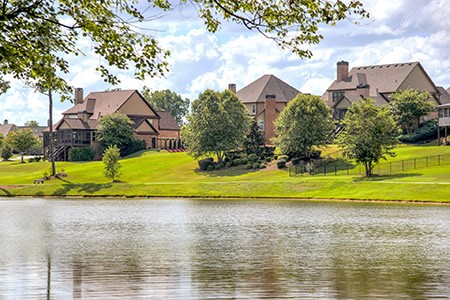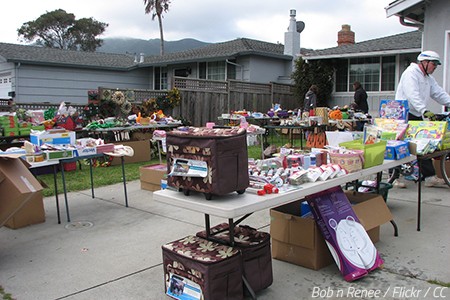 Moving to a new neighborhood is a big deal. In most cases, it’s a step way out of your comfort zone even if the destination neighborhood is located in the same town or city. And when moving to a new neighborhood that’s situated in another part of the country, then the house moving challenge becomes even greater.
Moving to a new neighborhood is a big deal. In most cases, it’s a step way out of your comfort zone even if the destination neighborhood is located in the same town or city. And when moving to a new neighborhood that’s situated in another part of the country, then the house moving challenge becomes even greater.
There are many reasons why you may have decided to move out – a better quality of life, a safer neighborhood, a shorter commute time, a better school for your child, and so on. And here’s what you should know when moving to a new neighborhood in order to ensure a smooth transition between the two homes.
Here are the best 10 tips for moving to a new neighborhood.
1. Pick a good neighborhood
Before you can move to a new neighborhood, the very first step is, of course, to find a good neighborhood to move to. It’ll make your move much easier and straightforward if you’ve already decided on where you want to relocate… but if you haven’t done it yet, then now is time to make that choice.
You should never pick a neighborhood randomly – instead, do your homework right and research the area thoroughly before making up your mind:
- Housing prices. Naturally, you’d love to move to one of the best neighborhoods in your current town or a new city, but can you really afford to actually rent or buy a home there? Experts say that your monthly rent or mortgage should not exceed 30% of your income.
- Crime and safety. This criterion is really important – you just have to know how dangerous or how safe a neighborhood is before you decide to move to live there. Search for crime statistics online or contact the local police station for more information.
- Commute time. How far is the new neighborhood from your workplace? Consider the commute time before making your final decision.
- Schools. When moving with children, then the proximity to the best schools in town becomes a major factor when deciding on a neighborhood to move to.
- Green areas. Life in big cities can be tough if there are too few green areas close to where you live. You don’t need to live right next to the largest city park but you don’t need to put up with a concrete jungle either.
2. Transfer the utilities
When moving to a new neighborhood, you have to remember to transfer or change the household utilities to the new place – electricity, water, gas, Internet, phone, cable TV, and so on.
But before you do it, you’re going to have to decide which utility services you’ll keep. If you’re not using a service that much – maybe you’re not watching cable TV as often as you thought you’d do – then you should definitely consider getting rid of it in order to cut costs.
Get in touch with your current utility providers, at least 3 weeks before moving out. If you happen to be moving within the same town or locally within the same state, then request a transfer of the utilities to the new house or apartment shortly before Moving day. In case of a cross-country move, request disconnection of the household utilities from the current providers and look for new utility companies in the destination town or city.
Of course, remember to pay any overdue bills with the current utility providers so that you can get back the security deposits from them, if any.
How to transfer utilities when moving
3. Change the address

Change your address with the USPS before an important piece of mail gets forever lost.
It goes without saying that the new home in the new neighborhood will have a different street address from your current one. And that’s exactly why your next task is to change your address with the United States Postal Service (USPS), so that you can continue to receive your mail without any interruption.
Luckily, you’ve got 4 good options to change your address when moving to a new neighborhood, so pick the one that’s convenient for you.
- Online. Visit the Change of Address page of the USPS, fill in the online change of address form, provide a valid e-mail address, and then submit the change of address application. You should receive a confirmation e-mail soon.
- In person. For many people, this is the best way to change your address shortly before moving out or right after the move is over. Just visit the closest USPS office, fill out a PS Form 3575 there, and hand it over for processing.
- By mail. Of course, you can also change your address with the USPS by mail. To do that, print out the PS Form 3575, fill it out, and mail it with a first-class postage stamp to POSTMASTER, United States Postal Service.
- By phone. Call 1-800-ASK-USPS and follow the pre-recorded instructions to change your address.
How to do a change of address when moving
4. Be a smart packer
While you’re getting ready to move to a new neighborhood, it’s important to come up with an excellent packing strategy, so that you can make the packing process as effective as possible.
In reality, there are several packing rules that you should try to follow to pack up your things quickly and safely.
- Begin packing your stuff as early as possible – packing for a move is the most time-demanding task in your moving checklist.
- Inventory your household items and choose to pack only the ones that you do intend to use after the move is over. Do NOT pack and move big and heavy furniture, unless you really have to.
- Cut the packing costs by getting hold of free moving boxes. As long as you have enough time, it’s fairly easy to get good cardboard boxes without paying for them.
- Use plenty of padding and wrapping materials when packing extra-fragile items such as chinaware, glassware, lamps, electronics, artwork, jewelry, and so on.
- Pack a few essentials boxes filled with… essential items that you will need until you get reunited with your regular household items. It’s best to prepare one essentials box for each family member.
- Label each box as soon as you’ve packed it – write down the content, destination room, and handling instructions, if any. This way, you won’t lose valuable time looking for specific boxes after the move.
12 Brilliant Packing Tips and Tricks for Moving
5. Get help with the move
One of the things you must know when moving to a new neighborhood is that you can’t do it all entirely on your own. Depending on a number of factors, a house move can be really difficult to plan and execute, so in most cases, you’ll need help with packing and moving your household items to the new residence.
When moving to a new neighborhood within the same town or city, then you may consider organizing a DIY move since the move distance will be short. If so, then you should reach out to your close friends to give you a hand with packing up your things prior to Moving day or with lifting heavy furniture on the day of the move.
In fact, the best thing about moving only a short distance away is that you can do multiple trips with your own car and, should you choose not to move any furniture, you may not even need to rent a moving truck.
However, when moving to a new neighborhood that’s located in a new city in another state, then it’s best to hire the services of a professional moving company. The experienced movers will take care of all details for you, thus reducing considerably the stress levels you must be feeling during the residential move.
How to find reliable movers in 10 steps
6. Unpack with a good strategy

You don’t need to rush into unpacking all boxes at once. Instead, think of an unpacking strategy that will work best for you.
A priority task after moving to a new neighborhood is to start unpacking your stuff so that you can try to introduce some degree of normalcy in your post-move life. Bear in mind that as long as you see those piles and piles of unopened boxes, you’ll never be able to relax completely, let alone manage to settle in the new home.
Unpacking is an essential task but the good news is that you don’t need to do it with the same sense of urgency as you did the packing one. And the reason for that is obvious – there isn’t a deadline now that you need to fit into.
As long as you’ve unpacked the 3 most important rooms – bathroom, bedroom, and kitchen, you can choose to slow down the unpacking pace in order to reduce the stress a bit. What you should do is come up with a solid unpacking strategy that will let you turn your attention to other equally important jobs.
Besides, there are more urgent jobs than rushing to unbox the TV. Right? Follow this Unpacking Checklist to tackle the unpacking marathon in the best possible way.
7. Secure the new home
You’re about to leave a neighborhood that you should know fairly well – maybe too well. Now you’re moving to a new neighborhood that is sure to hide many surprises for you – some of them good, others – bad.
One of your priority tasks after the move is to secure your new home. There are a couple of ways to do just that:
- Secure the new home against unauthorized access (break-ins): make sure you change the locks of all outside doors, check if all windows and doors close securely, install a security alarm against burglars – especially if that new neighborhood has a bad reputation, consider adding exterior lights if you’re moving into a house, and so on.
- Make the new place safer when it comes to fire safety: install fire alarms and smoke detectors, have a working fire extinguisher on each floor, and be sure to know how to operate those fire extinguishers in case of an emergency.
A good idea is to take a look at the homes in the neighborhood and see how they are secured. You can even ask for advice from your new neighbors about the best way to stay safe in the new area.
10 Essential Things to Do After Moving
8. Meet your new neighbors
Of course, moving to a new neighborhood means that you’ll have new neighbors as well. And depending on what kind of people happen to live next door, having new neighbors can range from being extremely good to nightmarishly bad.
In the very beginning, your neighbors can help you tremendously, mostly with good advice or useful information since you’re the new guy who just moved in and you don’t know yet how things work there.
After the move is over, gather the courage to go and say Hi to your neighbors. You don’t have to do much anyway – just introduce yourself and maybe ask them a few questions about the neighborhood to provoke a good conversation. Bear in mind that in time you could even become good friends with some of those folks.
So, don’t hesitate to get to know your new neighbors a little more than just saying Hi when you pass them. If you wish, you can even organize an informal housewarming get-together kind of party and invite some of the folks who live right next to you.
After all, some of the information you get from those people can prove to be invaluable while you’re settling down in the new neighborhood.
9. Get to know the new neighborhood

Explore your colorful neighborhood to uncover its secrets.
It’s only normal that the neighborhood you just moved to will feel unfamiliar and strange right after the move. In the majority of cases, time will help you feel more at home but the adaptation period can last for months, or even years.
To speed up the process of post-move acclimatization, you should make an effort to explore that new neighborhood in order to get to know it better. It’s not a secret that the better you know your surroundings, the more comfortable you will start to feel in them.
So, whenever you feel like you need a break from unpacking, go for an exploratory trip around your new neighborhood to get a feel of the environment around you. Little by little, feel free to leave its boundaries and get to know the rest of the town or city as well.
As a rule of thumb, visiting the nearest park or green area is a good start to the exploration process. Include nearby shopping centers, city landmarks, and other various points of interest in your walks. Local coffee shops or diners in the vicinity are also a good way to explore your new neighborhood.
10. Settle in the new neighborhood
One of the things you should look for when moving to a new neighborhood is a way to get more involved in the community. Whether you’ll want to do it or not remains to be seen, but having a more active role in the community life will definitely help you settle in the new neighborhood faster.
Just think of all the people you’ll meet and interact with without much effort and uneasy awkwardness. That’s right – making new friends is the secret to breezing through a potentially tough adaptation stage right after moving to a place where you don’t know anyone. Or hardly anyone.
- Be approachable and maintain a friendly attitude toward your neighbors;
- Attend local events – shows, performances, festivals, and so on;
- Join local groups and become a member of organizations that fight for good causes;
- Keep an eye on what’s happening around your neighborhood. A good strategic move is to use the mobile app Nextdoor – a place where “communities come together to greet newcomers, exchange recommendations, and read the latest local news.”
Being an active member in your neighborhood will also help you cope with a possible bout of relocation depression.
The post 10 Valuable Tips for Moving to a New Neighborhood appeared first on The Moving Blog.







